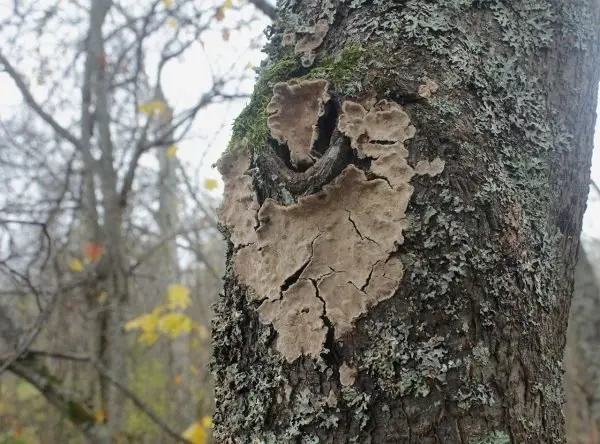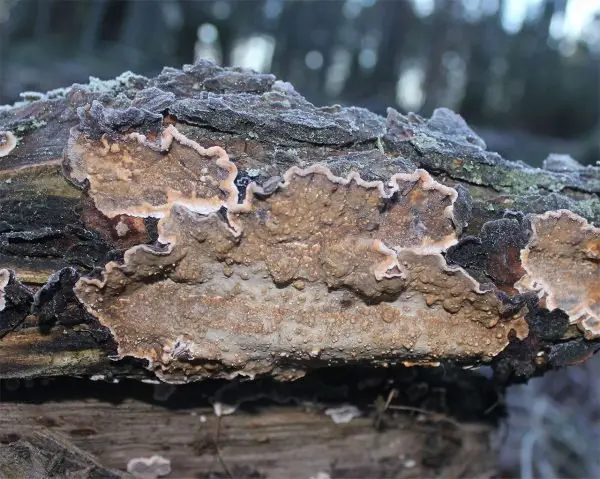Wrinkled stereoum (Stereum rugosum)
- Division: Basidiomycota (Basidiomycetes)
- Subdivision: Agaricomycotina (Agaricomycetes)
- Class: Agaricomycetes (Agaricomycetes)
- Subclass: Incertae sedis (of uncertain position)
- Order: Russulales (Russulovye)
- Family: Stereaceae (Stereaceae)
- Genus: Stereum (Stereum)
- Type: Stereum rugosum (Wrinkled Stereum)
- Stereum coryli
- Thelephora rugosa
- Thelephora coryli
- Thelephora laurocerasi
- Hematostereus rugosa

Description
Fruiting bodies are perennial, almost completely prostrate, dense and hard, disc-shaped, gradually merging into spots and stripes several tens of centimeters long. The edge is rounded, slightly thickened in the form of a small roller. Sometimes prostrate fruiting bodies with a bent wavy edge are formed, in this case the upper surface is rough, with zonal striping in black-brown tones and a light stripe along the edge; the width of the bent edge does not exceed a few millimeters. And it is very rare to find specimens growing in the form of hats with an open common base.
The underside is smooth, sometimes with small tubercles, rather dull, cream or grayish-ochre, with a light edge and more or less blurred concentric banding; with age, it becomes a uniform pinkish-brown, cracking when dry. When damaged, it turns red, like other representatives of the Haematostereum group, and this reaction can be observed even in dried specimens if the surface is first moistened with water or saliva.
The fabric is hard, ocher, thin annual layers are visible on the cut of old fruiting bodies.

Ecology and distribution
Common view of the northern temperate zone. It grows throughout the warm season in mixed and deciduous forests, in parks and forest parks on dead wood (on dead wood, fallen trees and stumps) of various deciduous species, occasionally affects living damaged trees.
Related species
Blood-red stereoum (Stereum sanguinolentum) is found only on conifers (spruce, pine), differs in a more yellow color and a prostrate-bent growth pattern.
The flannelette stereoum (Stereum gausapatum) is also characterized by an open-bent growth pattern, it is usually found on oak and has a brighter reddish-ocher color.









